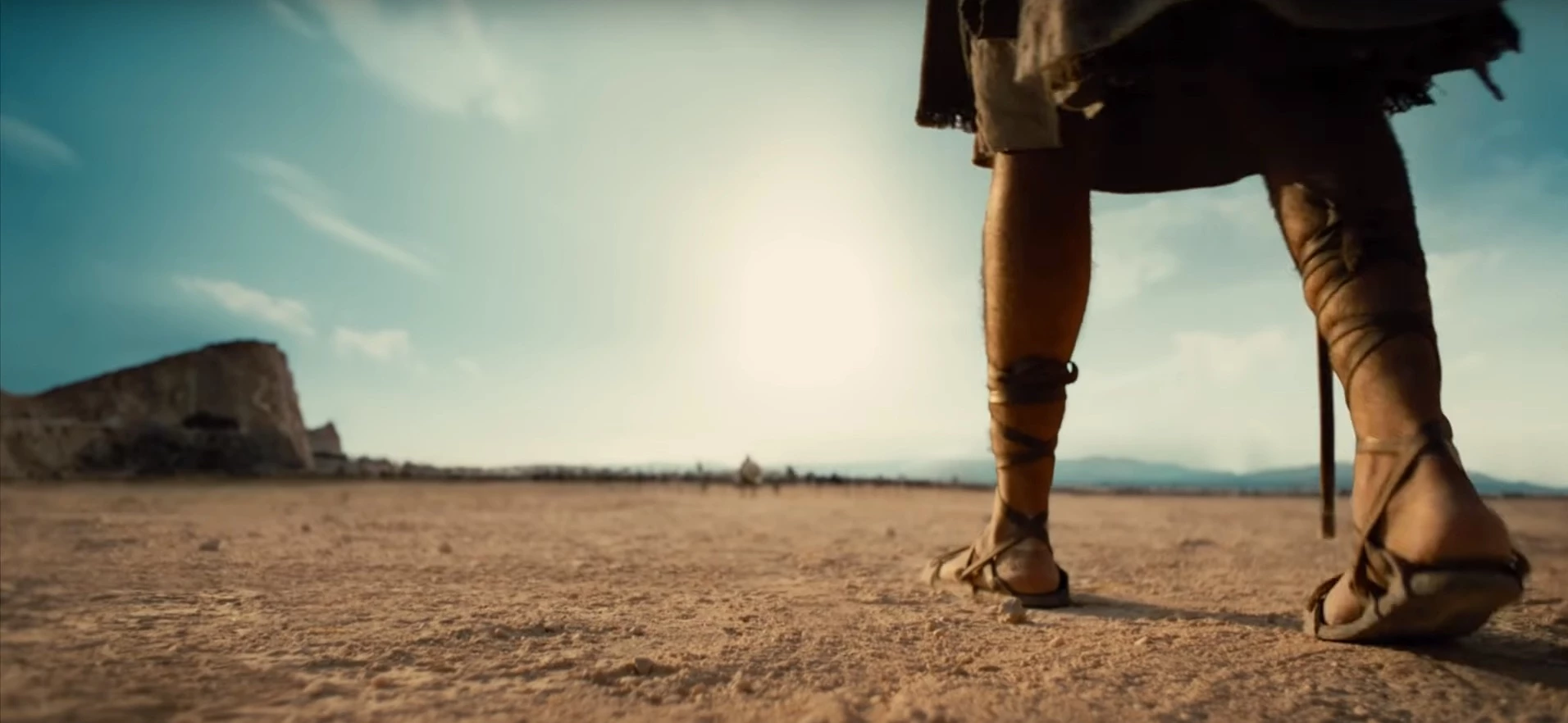How do you turn a good flight simulator into a good flight-simulation game?
This is the crux of knowing what’s new, interesting, and yet unwieldy about Microsoft Flight Simulator 2024, the first entry in the decades-old series to actively court casual flyers and Xbox Game Pass-ersby. The series’ modern handlers at Asobo Studio aim for 2 extremes in this iteration: a realistic flight sim that lets aviation pros flip all control on the overhead panel of an Airbus A310 airliner, and a gamepad-friendly, assists-filled game that teaches basic skills and allows the player to set a course to pretty-looking places.
Yet nevertheless I approach the game, I frequently find myself either frustrated, confused, or bored. Why fly these skies, I keep asking myself, with nary a clear answer — no overwhelming sense of visual awe, no core progression that feels respectful of my time, and a constantly reinforced fear that any random glitch might send me into a method tailspin.
MSFS24 is, at its best, a competent, 8.5-out-of-10 facsimile of flight. It lets novices hold nothing but a gamepad and, through a constant hum of tooltips and assists, get a tiny biplane from takeoff to cruising to landing — all while feeling like a real-deal take on aerial handling. It lets players illustration a flight from seemingly all patch of land and sea (yes, even through restricted airspace like Pyongyang’s). On a method level, the sim runs chunkily but decently on Xbox Series X consoles, and better on high-end computers, as far as rendering fluffy clouds, foliage-lined landscapes, and (sometimes) recognizable cities. And if you want to take it up 10,000 notches on a PC, you can add an elaborate HOTAS rig, eye tracking hardware, VR headsets, and more.
The same can mostly be said for the series’ relaunch as Microsoft Flight Simulator in 2020, which saw Asobo and Microsoft squad up to combine the promise of full-Earth flight with a modern visual engine and a glut of Bing map data. Ahead of that launch, the devs had promised that its procedural terrain generation could make any location look believable adequate to fly over, and while that was actual at about 30,000 feet, closer scrutiny revealed quite a few missing visual detail: blurry cities, unconvincing landscapes, and ho-hum water.
This time around, things have improved adequate to make MSFS24’s Earth look believable at closer to 10,000 feet, give or take. This is primarily thanks to improved conversion of the world’s foliage and forests; the squad at Asobo is now parsing and rendering these with more diverse and believable geometry. But I’ve inactive found exceptions that baffle Asobo’s data-translation toolset, like this long of Mexican… lakes? Buildings? I’m not certain what these blotches below are expected to be, but they would be right at home in an Ace Combat video game from the early 2000s:
Like in MSFS20, major cities and airports proceed to trust on handcrafted renderings of celebrated buildings and landmarks, and thus far, assets like the Eiffel Tower, the fresh York City skyline, and Brazil’s Christ the Redeemer look like polygon-for-polygon matches for their MSFS20 equivalents. Sadly, the same can inactive be said for the lower-priority buildings that fill out most cities, which leads to many Insert Your favourite City Here examples of unconvincing buildings and terrain across the planet.
In my case, my erstwhile hometown of Dallas, a busy global flight hub, only has 1 accurately rendered specialty building: its basketball and hockey arena, which is offset from the downtown skyline. Worse, its pair of fancypants Calatrava bridges proceed to be rendered as generic roads over a river, with a weird dollop of white, flat concrete where their signature arches should otherwise appear. On a “visual flight rules” (VFR) basis, I’d like as a pilot to see an accurate bridge-to-river ratio than a squat sports arena.
The issue, really, is the uncanny valley that MSFS24 constantly flies into and out of. A jaw-dropping sunset bathes a billowing array of convincing clouds in postcard-worthy oranges and purples. Next to that, an island’s buildings look like poorly rendered Duplo blocks, and the water at its shore suffers from a mix of ugly wave effects and a bizarre, brightly lit seam separating its land and sea. And if you zoom the camera out in that moment, the plane you’re piloting might have flickering textures on all its sides for any reason, which distracts from the awe-inspiring, foliage-lined mountain behind it.
At a advanced cruising altitude, or erstwhile taking off and landing at any of the game’s handcrafted airports, MSFS24 neatly glides past any of these complaints. It looks and feels good adequate for the sim flyer who wants to plug in their favourite HOTAS gear and role-play as a pilot for 20- or 80-minute flights. But flying on a more novice level, for the sheer thrill of realistic, beautiful scenery, is harder erstwhile the game looks this uneven.
For that player, MSFS24’s fresh selection of activities might seem like the perfect way to guide them toward carefully rendered corners of the planet and an ongoing sense of accomplishment. If only.
Video games frequently conflict with reproducing the entirety of a planet. In No Man’s Sky, plot, mission structure, base building, and another systems outshined the game’s quintillion pre-generated planets. Spore rhymed a small besides easy with Snore, the way it asked players to manage its mostly lifeless worlds.
The best exception might be Where in the planet Is Carmen Sandiego? celebrated places, historical places, comic places: Its devs staked out a map and dotted it with a script, puzzles, and life. MSFS24, then, is the other of Sandiego.
The game’s “activities” can be found in a top-level menu, yet they’re mostly rather demanding. In some, you’re scored by how low to the ground you can fly without crashing; in others, you must land on tiny or hard runways through severe weather patterns. There’s no prompting to take on the game’s hours of flight-training exercises before trying these challenges, but that training is absolutely necessary.
The easiest activity is simply a series of photography challenges, where you fly toward a famous, scenic vista, then pause the flight to pull out a camera and snap a peculiar kind of photo. The very first photograph challenge asks players to fly toward the pyramids, which seems like a large “only in video games” kind of thing to do, but then you see what the full thing looks like — all of the poorly rendered buildings and splotchy textures — and wonder: Did anybody actually test this mode? Is this the first thing the devs wanted MSFS24’s players to see?
Thankfully, another photograph challenges realize the assignment and look more handsome, though each has its own mix of beautiful and unrealistic elements. After a while, the mix of hard activities and simpler photograph challenges run into a problem: What precisely are players accumulating? Photos come with objectives, and challenges come with leaderboards, but advancement in either does nothing to advance the game or unlock fresh content.
On paper, MSFS24’s massive “career” mode is simply a more welcome addition to the series, as it asks players to advancement from aspiring pilot to full-time businessperson. Train to learn basic flying skills, unlock certifications, take on exceedingly hard missions, and yet get into an economy of buying fresh aircraft and making serious cash. Search-and-rescue, firefighting, skydiver accommodation: MSFS has stuff for you to do this time around beyond taking off, cruising, and landing.
Only, it either doesn’t work or feels tragically soulless.
I mentioned Carmen Sandiego earlier due to the fact that that series was careful about where it took players, and what kind of stories and dialog they’d encounter. But MSFS24 is clearly eager to leverage Microsoft’s bullishness about AI: Why have an author compose a script about a flight around a circumstantial landmark, erstwhile Copilot can make cringeworthy chatter about any random location individual might fly to or from?
Most of the game’s earliest missions affect ferrying AI-brained passengers from 1 place to the next, all while they read an AI-generated script utilizing AI-generated voices. (Worse, these people appear in your plane with vacant, wide-eyed stares.) The soulless results consistently make me want to crash whatever plane I’m flying these robo-weirdos on.
Even erstwhile I successfully tuned their voices out, however, I inactive ran into besides many issues. Since the missions are auto-generated across Earth — all starting in a hub region of your choosing — they frequently place takeoffs and landings in weird places, sometimes with trees, buildings, or another debris in the way of success. Completing a mission at anything little than flying colors docks the amount of pay per mission, which slows down the earliest legs of the career to a brutal crawl, as you request cash to acquisition access to fresh certifications. Plus, the criteria for performance can be rather opaque, if not at the bizarre whims of glitches. possibly I take a shortcut and get full pay anyway; possibly I accept a mission’s offer to skip ahead in my flight, only to lose access to essential steps, like calling to the ATC tower, due to glitches that end up costing me large bucks.
In later missions, players are expected to buy their own planes — and any runway-related glitch that sends a plane tottering end over end will cost even more of the game’s precious credits, either in repairs or in the outright cost of replacing the plane. The same can be said for the condition of the career where players optionally hire AI pilots to take a fleet out to run moneymaking missions, only to face repair bills and another costs for whatever they did to the planes. Even if these issues can yet be patched, I’m inactive baffled that the game has been out for weeks without the addition of an “easy” toggle to shift the economy into kinder territory.
All of this commentary is nowhere close the highest level of flight simulation scrutiny that avid flyers may seek. My 30 hours in MSFS24’s skies — full of low-level glitches, career economy setbacks, and a curious issue where my hot air balloons reverse-fired their heat in ways that would set a passenger on fire — did not put me in a position to fly at the highest levels. As but 1 example, only by watching a real-life pilot test the game on Twitch did I hear that MSFS24 might spend unrealistic amounts of time on deicing procedures.
Instead, my 30 hours in its skies confirmed that the game’s scattershot tutorials, middling career progression, barriers to higher-level missions, visual letdowns, and various glitches added up to the other of a positive, newbie-friendly flight school experience. Where there should be curation, there is AI. Where there should be splendor, there are flatly rendered bridges. (This says nothing of my issues with hooking up a HOTAS and having MSFS24’s in-game tutorials not tell me how to usage their buttons; I had to print out a full-page guide just to sensibly realize how to usage my Thrustmaster T.16000M bundle. My emailed questions to Microsoft’s PR squad about this issue stay unanswered.)
If the Asobo squad keeps up the same track evidence it had with MSFS20, I anticipate many of this game’s most egregious problems to get fixes — though I will never full trust modern Microsoft as a steward of a series I love, lest I forget how rapidly Halo Infinite became Halo finite. And if “more of the good stuff in MSFS20” is all you request to hear, these will yet be friendly skies for you. But only so much of MSFS24 can be patched with numerical value fudgings. besides much of the game’s core structure missed the mark, and besides many users were already subjected to beta investigating the servers and systems of a $60-and-up retail product. If you’re not already invested in the planet of flying, don’t invest in MSFS24.
Microsoft Flight Simulator 2024 was released Nov. 19 on Windows PC and Xbox Series X. The game was reviewed on PC utilizing a download code provided by Xbox Game Studios. Vox Media has affiliate partnerships. These do not influence editorial content, though Vox Media may gain commissions for products purchased via affiliate links. You can find additional information about Polygon’s ethics policy here.






















